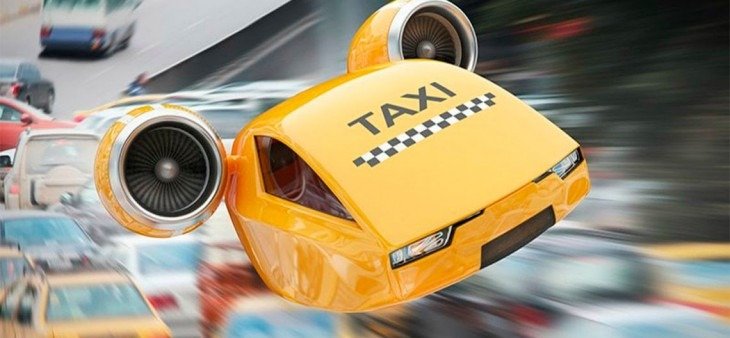
“Taxi!!”
Early in the next decade, you could be making that cry and looking toward the sky. Yes, there is now fact in science fiction.
A whole host of companies are pushing forward with ambitious plans. Companies such as Airbus, Uber and Rolls‐Royce are all working on exciting projects.
Rob Watson, head of Rolls‐Royce electrical team, said recently: “We are well placed to play a leading role in the emerging world of personal air mobility and will also look to work in collaboration with a range of partners.”
The British firm said it had drawn up plans for an “electric vertical take‐off and landing” (EVTOL) vehicle, which could carry four to five people.
Astonishingly reports are that the vehicle could travel at speeds of up to 250 mph (402 km/h) for approximately 500 miles. Rolls‐Royce also said the initial concept for EVTOL used gas turbine technology to generate electricity to power six electric propulsors, specially designed to have a low noise profile.
Its wings would be able to rotate 90 degrees, enabling the vehicle to take off or land vertically. It could also use existing heliports and airports.
“We believe that given the work we are doing today to develop hybrid electric propulsion capabilities, this model could be available by the early to mid-2020s, provided that a viable commercial model for its introduction can be created,” the firm said.
The company, who are set to disclose more details soon, said it was looking for an airframe maker and a partner to provide aspects of the electrical system.
Google founder Larry Page has unveiled an electric, self‐flying air taxi that can travel at up to 180 km/h (110mph). Yes, self‐flying! It will be able to travel up to distances of 100 km on a single charge, and it takes off and lands vertically.
It will eventually be available to customers as a service “similar to an airline or a ride‐share” said parent company Kitty Hawk on the Cora website.
It operates using “self‐flying software combined with human oversight”, it added. The aircraft has been developed in New Zealand, where the government said it welcomed the project because of its environmental credentials.
“We’ve got ambitious goals here in New Zealand, we want to get to net zero emissions by 2050, and that includes mobility,” said Dr Megan Woods, minister for research, science and innovation.
The firm said it is now working “constructively” with aviation regulatory authorities but declined to put a date on when Cora might start work.
It is undoubtedly an exciting and remarkable era we are living in, and gives a whole new meaning to ‘hailing a ride.’
Until next time…
